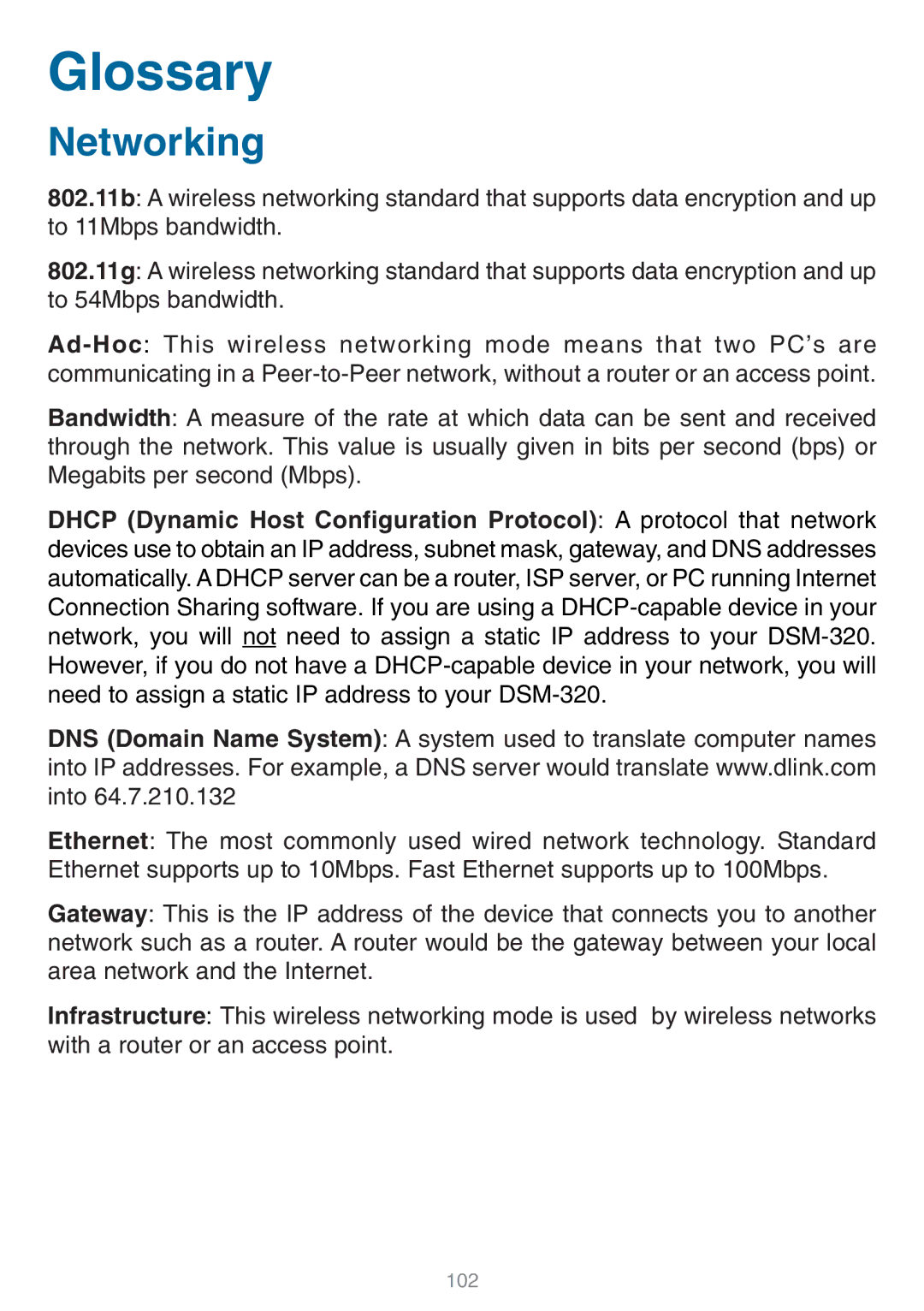Glossary
Networking
802.11b: A wireless networking standard that supports data encryption and up to 11Mbps bandwidth.
802.11g: A wireless networking standard that supports data encryption and up to 54Mbps bandwidth.
Bandwidth: A measure of the rate at which data can be sent and received through the network. This value is usually given in bits per second (bps) or Megabits per second (Mbps).
DHCP (Dynamic Host Configuration Protocol): A protocol that network devices use to obtain an IP address, subnet mask, gateway, and DNS addresses automatically. A DHCP server can be a router, ISP server, or PC running Internet Connection Sharing software. If you are using a
DNS (Domain Name System): A system used to translate computer names into IP addresses. For example, a DNS server would translate www.dlink.com into 64.7.210.132
Ethernet: The most commonly used wired network technology. Standard Ethernet supports up to 10Mbps. Fast Ethernet supports up to 100Mbps.
Gateway: This is the IP address of the device that connects you to another network such as a router. A router would be the gateway between your local area network and the Internet.
Infrastructure: This wireless networking mode is used by wireless networks with a router or an access point.
102
